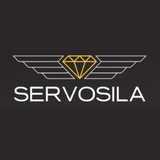A basic onboard setup consists of an internal combustion engine, a brushless electric motor attached to the engine, an onboard battery with a BMS and a Servosila SC-series controller acting as both the electric motor's driver and an electric power converter. The electric motor needs to be equipped with either Hall Sensors or an encoder.
Upon receiving a command from a control computer/autopilot, the Servosila controller drives the electric motor to start up the internal combustion engine. Once the engine is started, the electric motor becomes a three-phase power generator driven by the engine. The Servosila controller then turns itself into an inverter that converts the three-phase AC power into a regulated DC power for onboard payloads, while also charging the battery.
Servosila SC-series controllers receive commands and return telemetry via a CAN/CANopen network interface. A USB interface is also available for ease of configuration on the ground.
Servoscope, a software tool that accompanies all SC-series motor controllers, has been improved with simulation capabilities related to the starter-generator application. The tool helps select an electric motor that matches performance profile of the internal combustion engine as well as onboard payloads.
Furthermore, if an encoder is available in the setup, a range of advanced applications becomes available. For example, in a hybrid power application, an electric motor could be used to assist a piston engine during fuel-mixture compression strokes, while extracting the power during fuel burning strokes. It becomes possible to rotate the propeller into a safer position for engine-off landings.
>>Click here to continue<<
